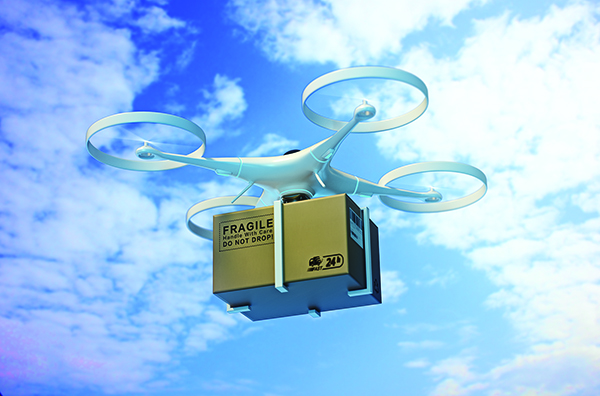
By Matthias Winkenbach and Mohammad Moshref-Javadi ·
February 24, 2022
While the increase in choice gives users more options, it also requires them to evaluate different systems to find the most appropriate one for their needs. We have created a classification framework that clarifies the differences between drone-based delivery systems in last-mile applications.
The framework also serves two other important purposes. First, it provides a unified classification system for academic and industry researchers and system developers. Second, the framework will help to align the work of these constituencies. As explained later, it is crucially important that industry and academic research is aligned as drone-based freight transportation evolves and the number of applications—ranging from package delivery to heavy-lift cargo movements—continues to grow.
As far as we know, this is the first classification framework that distinguishes drone-based logistics models according to their detailed design and operational configurations.
The basic framework
Private- and public-sector organizations are deploying drones in increasing numbers to deliver goods and services. In our research, the use cases fall into four broadly defined application areas: retailing and e-commerce, postal services and package delivery, food and beverage delivery and healthcare and emergency services.
Our systematic classification scheme is presented in two parts. First, we present a basic framework. Second, we propose extensions that refine this framework with information relating to the number of vehicles and depots, vehicle capacity and vehicle sharing possibilities.
The basic framework comprises four main categories of models as follows.
Pure-play drone-based (PD). In this model, drones deliver packages directly from logistics facilities such as distribution and fulfilment centers to customers. The PD model is limited by the flight range of drones and the number of depots in the network, and may not be able to serve all customers. Weight constraints represent another limitation; packages that are heavy and/or bulky may be beyond the capabilities of this model.
Unsynchronized multi-modal (UM). The UM model uses combinations of conventional transportation modes such as trucks (functioning as the supporting vehicle) and drones (functioning as the primary vehicle). These two types of vehicles operate independently so their movements are not synchronized. Because supporting vehicles expand the relatively limited range of primary vehicles, the UM option has fewer delivery limitations than its PD counterpart.

By Matthias Winkenbach and Mohammad Moshref-Javadi ·
February 24, 2022
While the increase in choice gives users more options, it also requires them to evaluate different systems to find the most appropriate one for their needs. We have created a classification framework that clarifies the differences between drone-based delivery systems in last-mile applications.
The framework also serves two other important purposes. First, it provides a unified classification system for academic and industry researchers and system developers. Second, the framework will help to align the work of these constituencies. As explained later, it is crucially important that industry and academic research is aligned as drone-based freight transportation evolves and the number of applications—ranging from package delivery to heavy-lift cargo movements—continues to grow.
As far as we know, this is the first classification framework that distinguishes drone-based logistics models according to their detailed design and operational configurations.
The basic framework
Private- and public-sector organizations are deploying drones in increasing numbers to deliver goods and services. In our research, the use cases fall into four broadly defined application areas: retailing and e-commerce, postal services and package delivery, food and beverage delivery and healthcare and emergency services.
Our systematic classification scheme is presented in two parts. First, we present a basic framework. Second, we propose extensions that refine this framework with information relating to the number of vehicles and depots, vehicle capacity and vehicle sharing possibilities.
The basic framework comprises four main categories of models as follows.
Pure-play drone-based (PD). In this model, drones deliver packages directly from logistics facilities such as distribution and fulfilment centers to customers. The PD model is limited by the flight range of drones and the number of depots in the network, and may not be able to serve all customers. Weight constraints represent another limitation; packages that are heavy and/or bulky may be beyond the capabilities of this model.
Unsynchronized multi-modal (UM). The UM model uses combinations of conventional transportation modes such as trucks (functioning as the supporting vehicle) and drones (functioning as the primary vehicle). These two types of vehicles operate independently so their movements are not synchronized. Because supporting vehicles expand the relatively limited range of primary vehicles, the UM option has fewer delivery limitations than its PD counterpart.

February 24, 2022

Subscribe to Supply Chain Management Review Magazine!
Subscribe today. Don’t Miss Out!
Get in-depth coverage from industry experts with proven techniques for cutting supply chain costs and case studies in supply chain best practices.
Start Your Subscription Today!

